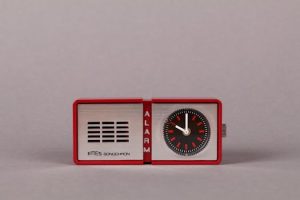The Psychology of Color Theory in Device Design
The use of color in device design has a much deeper impact on consumer behavior than just aesthetics. In fact, the colors used in device design can have a powerful influence on our emotions, thoughts, and decision-making. This is where the psychology of color theory comes into play. As a content writer professional in Google SEO, I will explore the impact of color theory in device design and how it can be effectively used to enhance the user experience and drive conversions.
What is Color Theory?
Color theory is a concept that has been around for centuries and is utilized in a variety of disciplines such as art, design, and marketing. At its core, color theory is the science of how we perceive and respond to different colors. It also deals with how colors interact with each other and the emotions and associations they evoke.
The Psychological Impact of Colors
Red
Red is a color that is often associated with passion, love, and excitement. It can also evoke feelings of urgency and energy. In device design, red is usually used to grab attention or create a sense of urgency. For example, it is commonly used for notifications and alerts, making users pay attention to them immediately.
Blue
Blue is a color that is often associated with trust, reliability, and calmness. In device design, it is often used to create a sense of security and stability. Many tech companies use blue in their branding and design to convey a sense of trust and reliability to their users.
Yellow
Yellow is a color that is associated with happiness, cheerfulness, and positivity. In device design, it can be used to create a welcoming and friendly atmosphere. Many apps and websites utilize yellow in their design to make users feel happy and relaxed while using their products.
Green
Green is often associated with nature, growth, and harmony. In device design, it can be used to create a sense of balance and serenity. Many eco-friendly products use green in their design to emphasize their commitment to sustainability and nature.
Pink
Pink is a color that is often linked to femininity, romance, and playfulness. In device design, it can be used to appeal to a female demographic or to create a fun and lighthearted feel. Many fashion and beauty apps use pink in their design to attract their target audience.
Purple
Purple is a color that is associated with royalty, luxury, and creativity. In device design, it can be used to create a sense of sophistication and elegance. Many high-end brands use purple in their design to convey a sense of luxury and exclusivity.
Using Color Theory in Device Design
Now that we understand how colors can evoke certain emotions and associations, let’s explore how color theory can be used in device design to create a positive user experience and drive conversions.
Branding
Color plays a huge role in branding and can contribute to a brand’s recognition and identity. Using a consistent color palette throughout a brand’s design can help create a strong and cohesive brand image. For example, the vibrant green used by Starbucks is instantly recognizable and has become synonymous with the brand.
Call-to-action Buttons
Color theory can also be applied to call-to-action buttons, which are crucial in driving conversions. Using an appropriate color for the call-to-action button can make it stand out and entice users to take action. For example, using a bright red button for “BUY NOW” can create a sense of urgency, while a green button for “SUBSCRIBE” can convey a positive and reassuring feeling.
Accessibility
Another important aspect of device design is accessibility. Choosing appropriate colors with sufficient contrast can improve the accessibility of a product for individuals with color blindness or low vision. Following color contrast guidelines, such as those provided by the Web Content Accessibility Guidelines (WCAG), is crucial in making your product accessible to a wider audience.
In Conclusion
The psychology of color theory in device design is a powerful tool that can significantly impact consumer behavior. By understanding the emotions and associations that different colors evoke, designers can effectively use color theory to enhance the user experience and drive conversions. However, it is important to ensure that colors are used strategically and with consideration for accessibility. By harnessing the power of color theory, device designers can create visually appealing and emotionally resonant products that leave a lasting impression on users.



